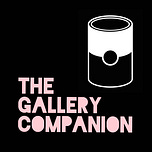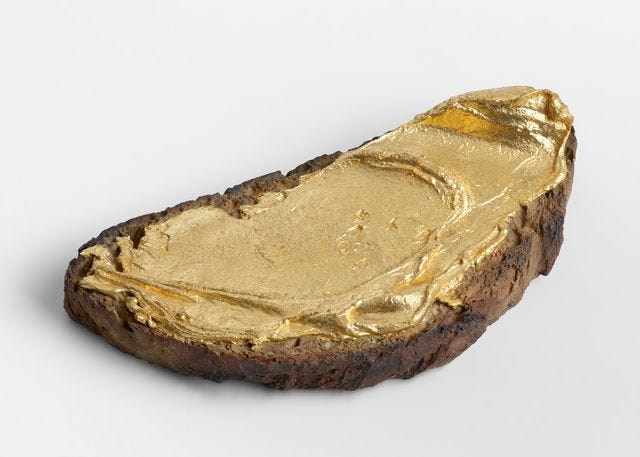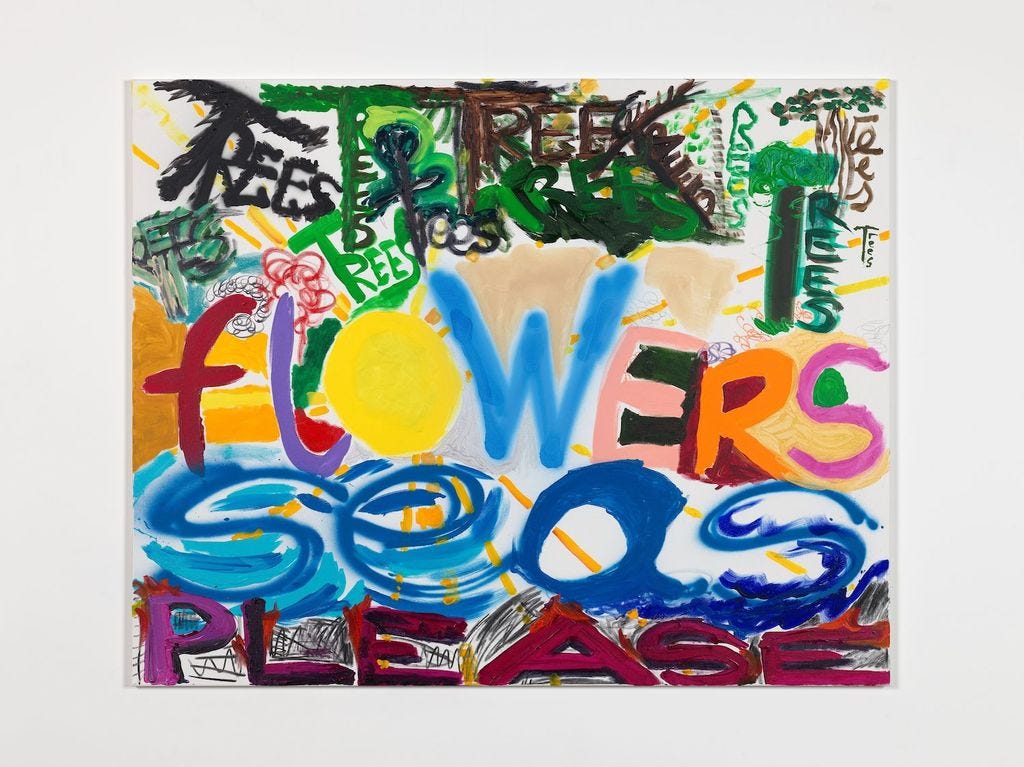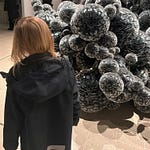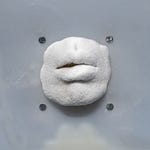

I’ve often heard artists talk about how making art for them is not optional, it’s essential. Life-saving, even. I was thinking about that this week as I was watching an interview with one of Britain’s leading conceptual artists, Martin Creed. As well as making videos, he's a musician, he paints, creates installations, uses lights and neon, and makes stuff.
The first question he was asked in the interview was ‘what do you do?’ I found his response really interesting. Instead of saying ‘I’m an artist’, Creed said,
I try to live my life in the world that I find myself in. And I spend most of my time trying to help myself to feel better because most of the time I don’t feel so good.
What he does every day, he says, is ‘to try and find excitement and beautiful things and people’ as a coping mechanism for the way he feels — and it’s an endless quest. The interview is one of the clearest explanations I’ve ever heard for the meaning of the phrase ‘art is life’. As Creed understands it, there is no separating line between what he creates and anything else he does in his day. Other people might call what he does ‘art’ but he’s not sure what ‘art’ actually is. ‘Art is what people collectively think it is’, he says. ‘It’s really hard to pin down, like love or magic’.
I know what he means. Readers who have followed me since the early days of The Gallery Companion will know that Creed is one of my favourite artists. I think it’s because I see a relatable struggle for something in everything he creates. That’s the connecting thread that runs through his diverse body of work. His art is his thoughts and feelings, boiled down to a basic something. What that ‘something’ is I haven’t been able to express clearly until now, but I’ve felt it when I’ve seen his work and it has made sense to me in that fleeting moment.
Take Work No: 3071: Peanut Butter on Toast from 2018, for example. The 'toast' is made of patinated bronze, the peanut butter is covered in gold leaf. He's used the traditional materials of classical sculpture to represent a slice of bread. He has made something so ordinary, so pedestrian, such an everyday thing for so many people, into a valuable sculpture and put it on a pedestal. It’s a bog-standard breakfast, but also I can’t think of anything more delicious.
It’s the simplicity of his ideas that gets me. This particular work is funny and a bit bonkers, and yet there’s a profoundness in it. Creed said his inspiration for Peanut Butter on Toast came from the time he once stayed in a Buddhist monastery. The monks would line up for breakfast and devour jars of peanut butter, spreading it thickly on toast. Creed said, "Everything that they’ve given up — greed — or that they were trying to give up, was all in that peanut butter.” It’s a representation of humans being human.

I really connect with the repetition in Creed’s work, too. ‘Repetition is comforting’, he says. Yes, it is. You see it in a lot of what he does. His neon sentences, for example, in which he solidifies the throw-away phrases and words we repeat to ourselves, drawing attention to the ritual language we fall back on in many situations to comfort each other. We roll out the phrase 'Everything is going to be alright' all the time. This light installation, Work No 790: Everything is going to be alright (2007) has been repeated in various forms and contexts around the world over the years including at the remote Braemar Castle in Scotland in 2018. It’s like he’s trying to catch something evanescent in material form, to pin down something that can’t easily be grasped.
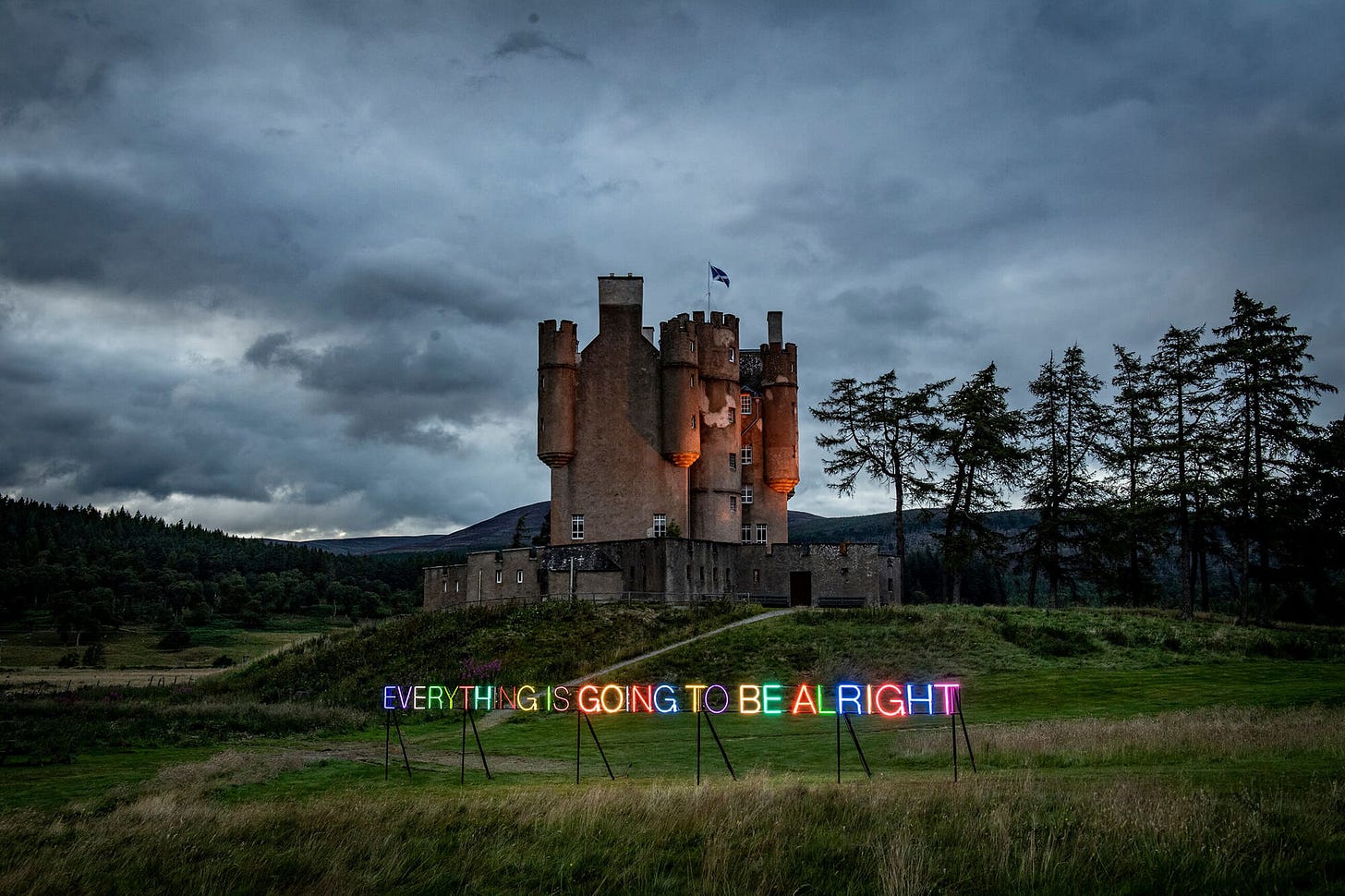
Many viewers put his work in the ‘hard to understand’ conceptual art camp. Worried there’s some deeper meaning that they are missing. ‘Why is that art?’ is quite often the (angry) reaction to his work. One gallery-goer threw eggs at the wall in response to his Turner Prize piece Work No 227: The lights going on and off back in 2001, mournfully shouting that artists' skills were dying out. But Creed is not trying to be clever. He’s trying to make things as simple as possible, because, he says, ‘simplicity is something you can hold on to’.
This artwork, for example, Work No. 3113: Trees, Flowers, Seas, Please (2018). In it he represents a landscape in coloured, layered words. In our everyday lives we feel the power of those different elements, trees, flowers and the sea, when we take time to stop and look. The simplicity of Creed’s request is almost child-like. It’s a profound yearning for nature that we all feel, and yet there’s an uneasiness we also all feel about what he’s communicating because of the constant narratives around human-driven climate change.
Listening to Creed talk about the ‘why’ of his practice in this interview — his mental struggle to grasp on to something real to help him get through the day — has put all of his work in a new light for me. He says this:
A work is helpful because it’s a solid thing, it’s something you can rely on. That square of red, it’s like a relief. That’s what I think when I see a painting by Frank Stella, for example. One of his black paintings. I think, “that’s a relief“. You know?
Yes, I do know. It’s definitely how I feel when I have a connection with a work of art or a piece of music. I can’t think of a better way to describe it other than to say that it’s a relief.
I would love to know what you think about Martin Creed’s art, and any of the ideas I’ve talked about here. And if you have time to watch it, the interview is great. It’s about 30 minutes long, but it flies by because he’s so interesting to watch and listen to. There’s a 4 minute video piece that he talks about in the interview called Work No. 1701: You Return that speaks to all of these ideas about repetition, simplicity, the struggle, seeking beauty and the relief of art. I’d love to know your response to this, too, even if you don’t have time to watch the interview:

